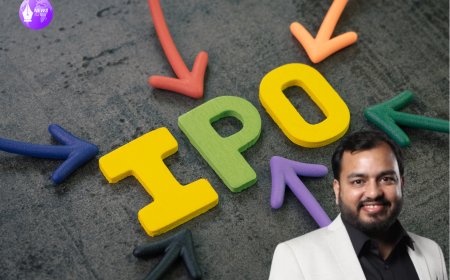India’s AI Moment: 47 % of Enterprises Now Running Live GenAI Use Cases
A new study reveals that on 16 November 2025 at 1:20 PM IST, nearly half of Indian enterprises are live-deploying generative AI, signalling a shift from experiment to execution.

New Delhi, Sunday 16 November 2025, 13:20 IST — A dramatic turning point has arrived in India’s enterprise technology landscape. According to the latest joint report from Ernst & Young (EY) in India and the Confederation of Indian Industry (CII) titled “The AIdea of India: Outlook 2026”, 47 % of Indian enterprises now have multiple live generative-AI (GenAI) use cases in production environments — while a further 23 % remain in the pilot stage. The Economic Times+2ETCIO.com+2
This shift marks a clear transition from speculative proof-of-concepts toward real-world performance. It means companies are now embedding tools such as large language models, generative agents and AI-driven automation into their core workflows — not just testing them in isolated labs.
From experimentation to deployment
The report highlights that business leaders recognise two key forces at work. First, 76 % of senior executives believe GenAI will have a significant business impact. NewKerala.com+1 Second, 91 % of decision-makers identified speed of deployment — the ability to move from “build” to “run” rapidly — as the biggest factor driving whether to buy or build AI systems. Business Standard+1
What does this mean on the ground? Enterprises are placing GenAI at the heart of operations, not just as digital embellishment. According to the survey:
-
63 % plan to focus GenAI efforts on operations,
-
54 % on customer-service functions, and
-
33 % on marketing. EY
These are areas with direct lines to cost, experience and growth — and that underlines how GenAI is moving from curiosity to business leverage.
Challenges remain beneath the surface
Despite the momentum, the report flags a key paradox: adoption is rising faster than investment. More than 95 % of firms still allocate less than 20 % of their IT budget to AI-/ML work, and only about 4 % exceed that 20 % threshold. EY+1
Moreover, while the number of live use-cases is robust, many organisations report that foundational work such as data readiness, governance frameworks and human-AI workflow design still needs attention. One partner at EY summed it up saying: “Enterprises that prioritise data readiness, model assurance and Responsible AI will shape the competitive advantage of the decade.” Express Computer
In addition, the talent gap looms large. A majority of companies flagged a shortage of skilled AI personnel — an issue that could slow the full-scale rollout of GenAI across the board. Business Standard
Why the moment matters
For India’s technology and industrial ecosystem, this inflection has broad significance:
-
It signals the transition to AI-first business models where intelligence is baked in, not layered on.
-
It brings the possibility of productivity gains, especially in sectors such as IT services, manufacturing and lifecycle support functions. (Earlier research has estimated productivity boosts of 43-45 % for parts of the Indian IT industry via GenAI adoption.) Reuters
-
It strengthens India’s role as a global service-and-innovation hub, where enterprises from around the world will look for scale-ready GenAI solutions and talent.
What companies should focus on now
As adoption enters the performance phase, companies that want to lead will need to focus on three practical priorities:
-
Operationalising GenAI — It’s no longer enough to run a pilot. Real value now comes from embedding GenAI into live workflows, measuring its business impact and iterating fast.
-
Data & governance maturity — With large-scale deployment comes risk: inaccurate models, bias, insufficient data lineage, or weak change management can derail value, or worse, erode trust.
-
Human-AI collaboration — GenAI isn’t a replacement story; it’s a co-pilot story. The highest performers will build workflows where humans and AI agents partner, and where roles evolve accordingly.
The bottom line
Sunday, 16 November 2025 will be remembered as a milestone for India’s enterprise AI journey. With nearly half of enterprises now running live GenAI use cases, the message is clear: the era of experimentation has ended, and the era of execution is here. The bold among India’s companies will move beyond showing off models and start showing measurable gains. The rest may find themselves playing catch-up in a world where speed, data discipline and collaboration count more than ever.
As India steps into this AI-driven chapter, the race is not just about innovation — it’s about integration, scale, and sustained capability. The clock is ticking: the companies that nail it now will define the decade ahead.
What's Your Reaction?
 Like
0
Like
0
 Dislike
0
Dislike
0
 Love
0
Love
0
 Funny
0
Funny
0
 Angry
0
Angry
0
 Sad
0
Sad
0
 Wow
0
Wow
0























